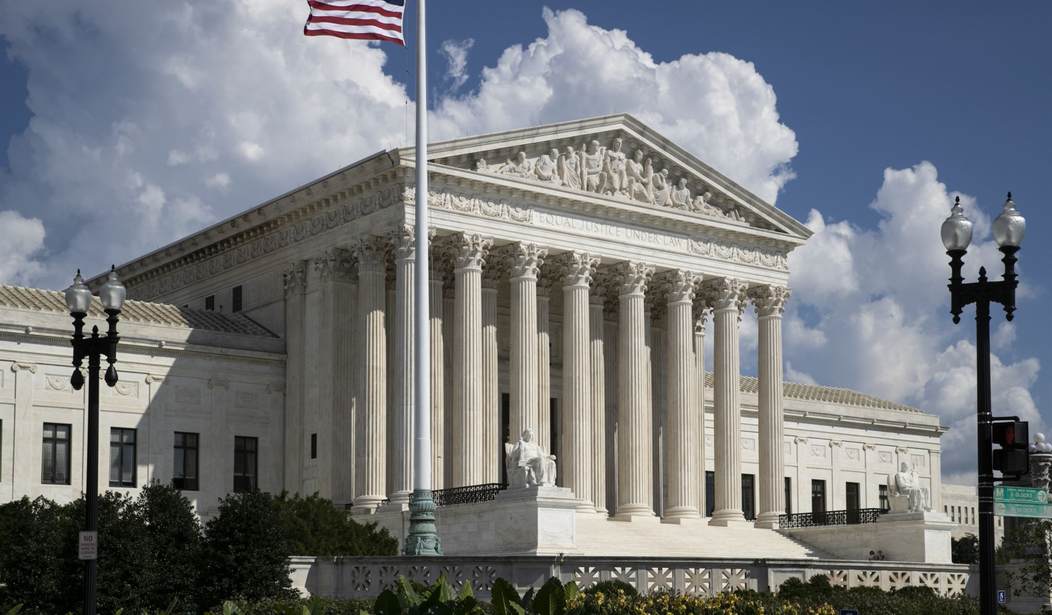The federal Sixth Circuit Court of Appeals issued a multi-faceted and complicated en banc decision Tuesday, voting 9-7 to uphold an Ohio statute that makes it unlawful for doctors to perform abortions when they know the mother is seeking the abortion because she has learned that the child she is carrying suffers from Down Syndrome.
An “en banc” decision is one where all active judges on the court participate and vote on the outcome of the case. Normally, appeals court cases are resolved by three-judge panels, but there is a process by which all the judges of the court are asked whether to review a case a second time — setting aside the panel decision — with all judges participating.
The 16 judges who participated in the case combined to write 11 different opinions. Trying to synthesize and explain all 11 opinions is beyond the scope of what I will try to accomplish here.
But there are a few “top-line” takeaways from the case that are noteworthy — one of which takes me back to a point I have made previously here that Chief Justice Roberts’ position on abortion is not well-understood. Last year, he was criticized by those who believe he reversed himself when he voted with the four liberal Justices to sustain a lower court’s ruling that the “medical privileges” statute in Louisiana was unconstitutional after having voted just four years earlier that a nearly identical statute in Texas was constitutional. I return to the issue raised by him in that case down below.
The Sixth Circuit case decided on Tuesday is Pre-Term Cleveland v. McCloud. At issue was an Ohio statute that applied to physicians, not their patients. The law did not make it illegal for a woman to seek an abortion because her baby has been diagnosed as having Down Syndrome — it only makes it illegal for a doctor to perform the abortion if he/she learns in advance that the reason the woman is seeking an abortion because the baby has Down Syndrome.
If one doctor declines to perform the procedure because of what he or she has learned, the woman can seek out another abortion provider to have the procedure which would be legal — unless the second doctor learns the same information.
The primary legal issue in the case does not involve the constitutionality or “right” to have an abortion. As has been the case for several decades, the primary legal issue in the case is the extent to which Ohio can regulate the procedure without being deemed by the courts to have created an “undue burden” on the right to seek an abortion. This question brings into play the second most important Supreme Court decision on the issue of abortion, Planned Parenthood of Southeastern Pennsylvania v. Casey.
Casey, and the Supreme Court decisions that have followed in its wake, deal with various issues of state regulation of abortion services. Numerous states have passed various statutes over the five decades since Roe v. Wade which imposed various restrictions and conditions on abortion services. About Casey, the Sixth Circuit wrote:
[T]he lead opinion corrected the mistaken view of Roe that saw any or all pre-viability “attempts to influence a woman’s decision . . . as unwarranted,” saying that such an absolute rule was “incompatible with the recognition that there is a substantial state interest in potential life throughout pregnancy.” And, in Gonzales v. Carhart … (upholding an abortion regulation that applied “both previability and postviability”), the Court emphasized that “Casey rejected . . . the interpretation of Roe that considered all previability regulations of abortion unwarranted.”
Casey was decided in 1992. In the nearly 30 years that have passed, the legal fight over restricting abortion services has been primarily a struggle over where states can “draw the line” without violating Casey — how much regulation is too much? The various opinions in Pre-Term Cleveland almost all address the views of individual judges about what Casey, and the decisions that followed Casey, dictate in terms of the Ohio law as it applies to doctors.
But the most glaring problem with Casey is the fact that there is disagreement over just what it is that Casey decided, and how authoritative that decision really should be.
Casey was a plurality decision. Only two other judges signed on to the entirety of what became the Opinion of the Court by Justice O’Connor — Justices Kennedy and Souter. The fourth and fifth votes on the outcome — making it 5-4 — were provided by Justices Stevens and Blackmon. But each wrote separately, explaining that they agreed with only parts of Justice O’Connor’s Opinion and the outcome, and dissented from other parts of her Opinion. Four Justices dissented in the outcome — Chief Justice Rehnquist, along with Justices White, Scalia, and Thomas.
How Casey is to be applied has been a matter of continuing dispute in the three decades since the case was decided, and various Supreme Court decisions following Casey — and purporting to apply Casey — have led to a lengthy legal debate over whether Casey’s analytical framework is fatally flawed. The three-justice plurality of O’Connor, Kennedy, and Souter, with some level of concurrence by Stevens, has been endorsed by the Court in a fractured manner on the subject of abortion. It is said to have established the following “standard” for determining the constitutionality of restrictions on abortion services imposed by state laws:
To protect the central right recognized by Roe while at the same time accommodating the State’s profound interest in potential life, an “undue burden” standard should be employed. An “undue burden” exists, and therefore a provision of law is invalid, if its purpose or effect is to place substantial obstacles in the path of a woman seeking an abortion before the fetus attains viability.
The fight among the 16 judges in the Sixth Circuit involved, to one degree or another, an analysis of whether the Ohio statute created an “undue burden” on a woman’s right as established by Roe v. Wade to obtain an abortion. As I noted at the outset, reviewing and analyzing the views of the various Judges is a task beyond that which I’m prepared to take on here.
But, the outcome in Pre-term Cleveland, and the dueling opinions of the various judges, takes me back to a question posed by Chief Justice Roberts in 2020 in his concurring opinion in the case June Medical Services v. Russo, which I referred to above.
In Russo, the Supreme Court affirmed a lower court decision declaring the Louisiana requirement that an abortion services provider have “admitting privileges” at a hospital within a certain geographic proximity to the location where abortions were performed was an “undue burden” on the right to abortion under Casey.
The outcome in Russo was identical to a Supreme Court decision four years earlier in Whole Women’s Health v. Hellerstedt, where the Court struck down a Texas statute with nearly identical language as the Louisiana statute. The Chief Justice voted to find the statute in Hellerstedt to be constitutional, placing him on the losing side of a 5-4 decision, with Justice Kennedy joining the four liberals — Justices Ginsberg, Breyer, Kagan, and Sotomayor in declaring the statute an “undue burden” under Casey.
Between Hellerstedt and Russo, Justice Gorsuch replaced Justice Kennedy following his retirement. Conservatives expected that Justice Gorsuch would join with the four dissenters in the new case on the Louisiana statute, and vote to uphold the “admitting privileges” statute in Louisiana.
But Chief Justice Roberts, citing stare decisis and his view that the Court’s jurisprudence should not shift so radically on constitutional issues simply because of a change in composition caused by one new Justice joining the Court, voted with the liberals on the outcome — invalidating the Louisiana statute — but not joining in the Opinion finding that the Lousiana statute was an “undue burden” under Casey.
The Chief Justice criticized the extent to which the Court, or lower courts, viewed the Casey standard as requiring some type of “balancing test” to determine what burden is “undue,” stating that such efforts placed the Court in the role of a legislature.
But the Chief Justice made the following observation as well — which I read as an invitation to future litigants:
Both Louisiana and the providers agree that the undue burden standard announced in Casey provides the appropriate framework to analyze Louisiana’s law. Brief for Petitioners in No. 18–1323, pp. 45–47; Brief for Respondent in No. 18–1323, pp. 60–62. Neither party has asked us to reassess the constitutional validity of that standard.
The Pre-term Cleveland decision, with its 11 opinions drafted from an en banc panel of 16 judges, seems to set up this question quite nicely for Justice Roberts and the conservatives on the Court.














Join the conversation as a VIP Member